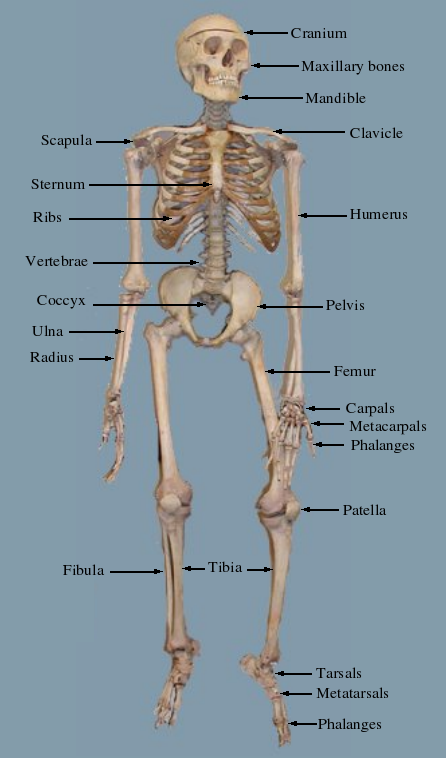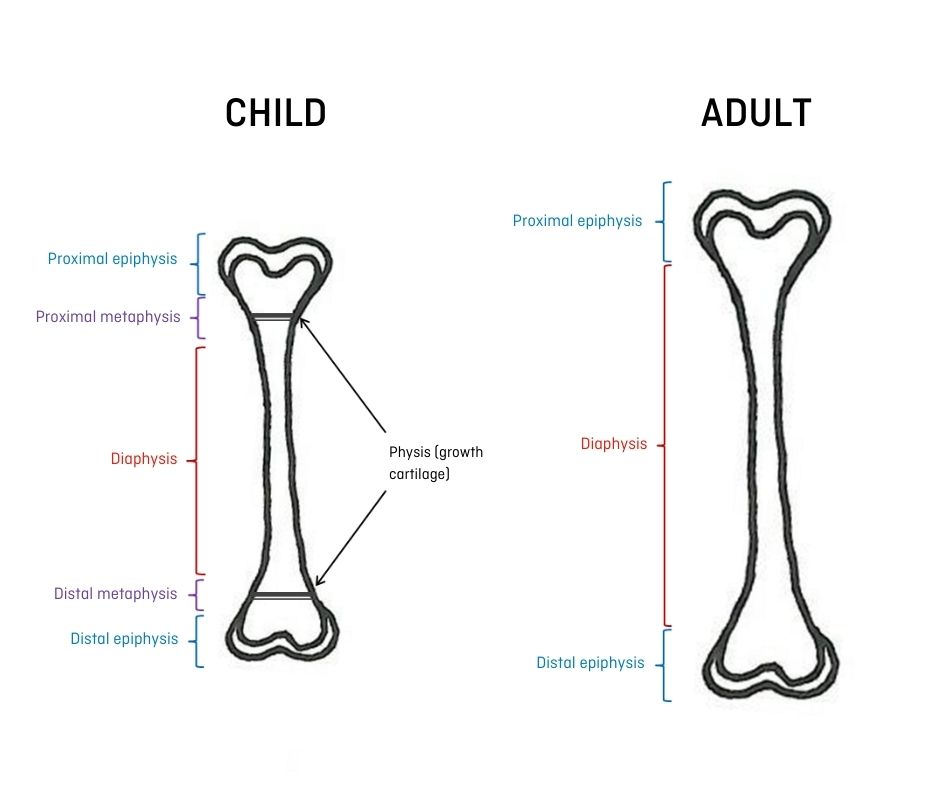Osteogenesis imperfecta
1. The locomotor system
The bones, joints, and muscles make up the locomotor system of the human body. This system allows humans to move and interact with the environment and remain still, and it holds and protects the other organs of the body.
An adult has 206 bones (Figure 1). Bones grow and develop from the embryonic stage until the person is 20-25 years old, when bone maturation is complete. In order for bones and joints to reach this age correctly regarding structure and functioning, we must avoid any genetic, neurological, nutritional, glandular or accidental factors. In this sense, everything that interferes with the normal development of the locomotor system can affect the normal development of the bones, joints, and even muscles and tendons. OI is an example of a genetic disease that interferes in the correct development of the locomotor system.

The bones of the body can be classified according to their shape:
- Long bones: these have a form of a long cylinder and are divided into three parts (Figure 2):
- Diaphysis: the central, cylindrical part.
- Epiphysis: the terminations of long bones, thicker and bulbous in shape, and covered with cartilage in order to articulate with the adjacent bones.
- Metaphysis: between the diaphysis and the epiphysis. In children, it is made up of cartilaginous tissue called growth cartilage, or physis, thanks to which the bone grows in length. When bone growth is completed, the physis is replaced by bone tissue, and the diaphysis and epiphysis are joined and the bone can no longer grow in length. The longest bones have two metaphyses, with one at each end; the closest to the body trunk or the head is called the proximal epiphysis, while the furthest is called the distal epiphysis.
Some examples of long bones are the humerus, the radius, the tibia and the fibula.

2. Short bones: these bones are squarer in shape, with a similar length, width and height. Examples of short bones are the carpal bones (8 bones that make up the wrist) and the tarsal bones (7 bones in the front part of the foot).

3. Flat bones: these have a flat shape and are generally found in the soft parts of the body that require protection. Examples of flat bones are the cranium, the ribs, the shoulder blade and the pelvis.
4. Irregular bones: each of them is characteristic and different from the rest. The vertebrae and the tiny ear bones are examples of irregular bones. Some of these can be made up of air-filled cavities, such as the facial bones (for example, the paranasal bones), which are called “pneumatic bones”.
